Sacred Things
[ post by William Benzon cross-posted from his New Savanna blog with Intro by Charles Cameron — nature, arts, the sacred ]
.
Intro
.
This strange category, the sacred, strikes me as important because it intensifies.
It gives rise to beauty, terror, repulsion, love. It empowers whatever vision, ideology, mission, crusade, jihad, movement, or tendency it touches. And our society has in some ways lost touch with it so completely that we think it is found in the outward forms of piety, and miss its secular manifestations, its manifestation in religions other than our own, and most significantly and disastrously the groundswell of feeling it gives rise to in unexpected places.
It is a haven for many in an unlovely or uncertain world, a dwelling-place for saints, idealists, artists and — who knows? — perhaps the mad. And it catches us up when we least expect it — when the lights go down low in a cinema or at the opera, the curtain parts, and we enter another world whose rules are not our own.
We need to understand this.
.
In my post on Sacred space and the imagination, I tried to give a feel for the sacred without focusing on places of official worship, where it may be so expected as to be missed elsewhere, and I headed that post “no mil/intel stuff” because “this blog is dedicated to exploring the intersections of foreign policy, history, military theory, national security,strategic thinking, futurism, cognition and a number of other esoteric pursuits” — and my post clearly fell under the “other esoteric pursuits” part of the rubric.
But pattern pervades all, and the arts are prime sources for an understanding, a grasp, an accurate intuition of patterns in general. So we are not so far from strategy after all…
William Benzon responded to that post of mine, which he’d cross-posted on his own blog, with a post of his own, which I am cross-posting here. By way of introducing Benzon himself, then —
Benzon is a scientist (he led the information systems group at NASA in 1981, developing strategic recommendations about NASA-wide computer use and acquisition, and in conjunction with David G. Hays, published a series of articles in the Journal of Social and Evolutionary Systems covering the development of cognition in the brain from primitive vertebrates through primates and in human culture from the preliterate world through the development of computing) with wide cross-disciplinary interests (he’s played concerts with the likes of Dizzy Gillespie and B.B. King), either the first or one of the very first independent scholars invited by the National Humanities Center to lead off a topic of his choice on their blog, the author of a brilliant book on music and the brain, Beethoven’s Anvil: Music In Mind And Culture, and my friend.
Here, then, is his response to my post. Take it away, Bill…
.
Sacred Things
.
… that still roaring dell, of which I told;
The roaring dell, o’erwooded, narrow, deep,
And only speckled by the mid-day sun;
Where its slim trunk the ash from rock to rock
Flings arching like a bridge;–that branchless ash,
Unsunn’d and damp, whose few poor yellow leaves
Ne’er tremble in the gale, yet tremble still,
Fann’d by the water-fall! and there my friends
Behold the dark green file of long lank weeds,
That all at once (a most fantastic sight!)
Still nod and drip beneath the dripping edge
Of the blue clay-stone.— Coleridge, This Lime-Tree Bower My Prison
This post began, I suppose, when, upon reading Charles Cameron’s post, Sacred space and the imagination, the “graffiti!” light went off in my brain. Not just any graffiti light, but this one:
Well, not that exact one, but it was a photograph of that same arch, a different photograph. This one shows the graffiti a little more clearly, but it’s not the same graffiti, as graffiti often changes over time, in some places more rapidly than others.
If you look back over Cameron’s images, you’ll see that it’s of a piece with them. And I’ve got dozens of photos of that arch: different times of the day, different seasons, different years, different graffiti, different angles. And that’s not all.
Graffiti and the sacred is a natural, one that hadn’t quite hit me full-on until I’d read Cameron’s post. You see, my first post about graffiti (the images, alas, are gone) was about this piece, which I called the Shrine of the Triceratops:
It’s not that I believe, mind you, that there’s a triceratops cult in Jersey City and that this is where they meet. Nothing like that. Rather, that that image seemed to embody of the spirit of the place, the Japanese word is kami. (That triceratops is now gone. First, eroded by the weather, then other writers went over it.)
I could go on and on about graffiti, but I won’t, because this post isn’t just about graffiti. But I’ll leave you with one last graffiti thought. Graffiti is often likened to cave art. Well, cave art, some of it, perhaps all of it, is sacred art. Not mere pictures, but spirits bodied forth on walls.
*
And then there’s my current film project, Apocalypse Now. And that is deeply intertwined with the sacred. Not that it presents itself as a sacred story, nothing so straight-forward, but that it deals with ultimate things in a secular way.
Ultimate things in a secular way! – now there’s a fine kettle of fish for you. Just what does that mean? I suppose, for example, that that physicist’s dream, the grand unified theory, is a secular run on ultimate things. But is that secular the same secular as is appropriate to Appocalypse Now? I think not. Are we then confronted with the varieties of secular experience, mingling next to the varieties of religious experience? And where’s the boundary?
But, no, the film doesn’t present itself as religious in the way that Tree of Life presents itself as religious. But the caribao sacrifice at the end, that’s a real sacred ritual, not an enactment. Coppola shot the real thing, not that you’d know that from watching the film, though you could see that the caribao was really hacked to death. And the final third of the film takes place in a liminal no man’s land. It’s sacred territory, for some (nontrivial) meaning of sacred.
Anyhow, it looks like I’m going to argue that Apocalypse Now is an ontological text. That it is about the moral structure of the world rather than conveying this or that moral (or immoral) action. It’s about how things are through the ends of time, not about how this or that person gets from here to there.
*
And that certainly seems to be what’s going on in Malick’s very different The Tree of Life. We have the trials of the O’Brian family, daddy’s something of a dick, though a music-loving dick, mommy’s kind but a flake, and one kid dies – whether by suicide or not, that’s not clear from the film itself (I’ve seen it only once — shouldn’t have to see it more than once on such a plot point). But god’s creation is magnificent. As if that had anything to do with the O’Brian’s afflictions. Well, it does. It doesn’t.
In any event, it seems that this film, that as a film must unfold in time, minute by minute by (often tedious) minute, blasts time to smithereens. It opens with a verse from Job and then a flickering shimmering light that’s supposed to be, I guess, a Supreme Something Or Other in the Universe, but isn’t this dew-flecked dandelion more elegant?
And then, I think, some story in the more or less present. Yes, that’s it, she gets the telegram. The news is not good, not good at all. Things fall apart. A plane. At the airport. And somewhere in there not too far into the film we get this sequence in which the world and all the life in it gets created, ending with some dinosaur killing some other dinosaur. Live action and CGI special fx. Wonderful imagery. Wonderful.
And slices of that imagery get cut into the rest of the film as life goes on, backwards and forwards. It’s as though the world didn’t get created by once, but always and ever, created and recreated, recreating.
*
And behind it all there’s Uncle Walt. Uncle Walt’s the first one who gave us a vision of the creation of the world, a cinematic vision that is, one we can see with our own eyes and hear with our own ears. All in less than half an hour. And it’s got dinosaurs!
I’m talking, of course, of “The Rite of Spring” episode in Disney’s Fantasia. He got the science wrong, even then they knew that the T. Rex and the Stegosaurus never co-existed, but he showed us the whole solar system, and seismic activity, and crashing dashing oceans, then life originating in the ocean, coming on land. And dinosaurs!
Disney’s the one who had the genius to visualize THE WHOLE THING. We who’ve grown up in the shadow of Disney now take it for granted that such things are seeable, but Disney was there first. If Disney hadn’t done it, Malick would have had to figure it out from scratch. As it is, Disney’s imagery has so permeated the culture than one can do (and see) a film like Tree of Life without once thinking of Fantasia.
In fact, the cultural coding against cartoons is so deep that I hesitate ever so little to put Fantasia in the same paragraph with Tree of Life. How could these films possibly have anything in common much less be the same thing: entertainment. Yikes! I mean, Tree of Life is so freakin’ serious. And Fantasia is so, well, gorgeous, and rather annoyingly cutesy at times.
And it ends in a forest glade:
The music is a rather fruity arrangement of Schubert’s Ave Maria. The motion: slow, stately, rigorous, restrained, austere.
— Bill Benzon.
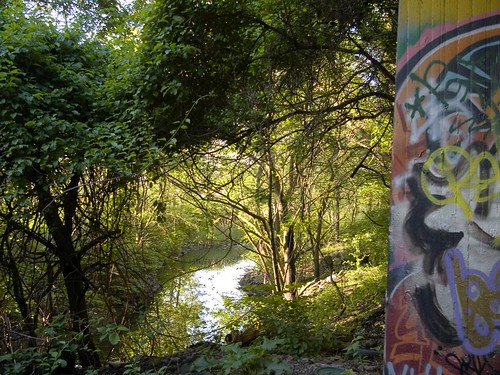
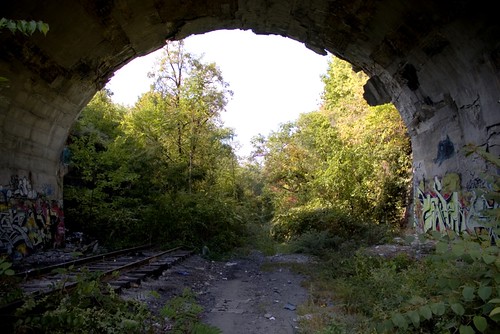
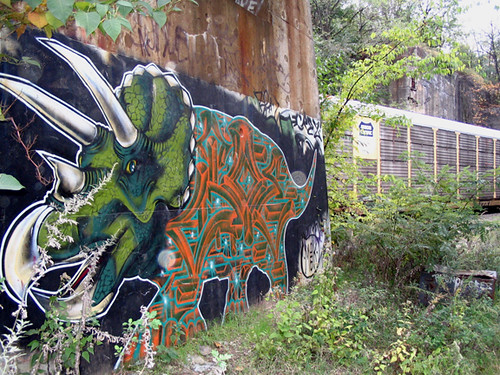
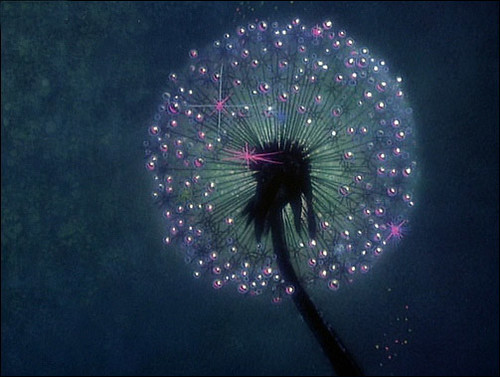

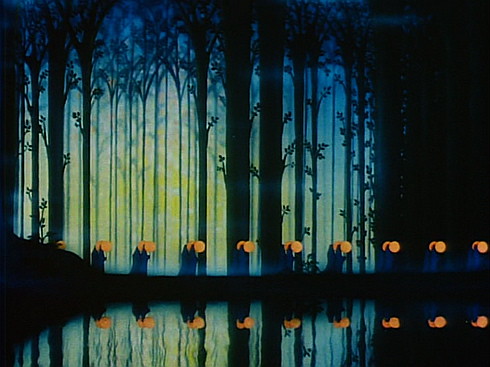



June 25th, 2011 at 6:02 pm
Great post the arts are very much so bring meaning to many things, including places we sometime least expect them. http://lesc.net/blog/fine-art-fine-tuning-situation-awareness-and-training-cops-see
June 25th, 2011 at 7:49 pm
I read your post, Fred, and followed your link to the Smithsonian article Teaching Cops to See, earlier today.
.
Excellent pointer, and very fitting here, too — many thanks.